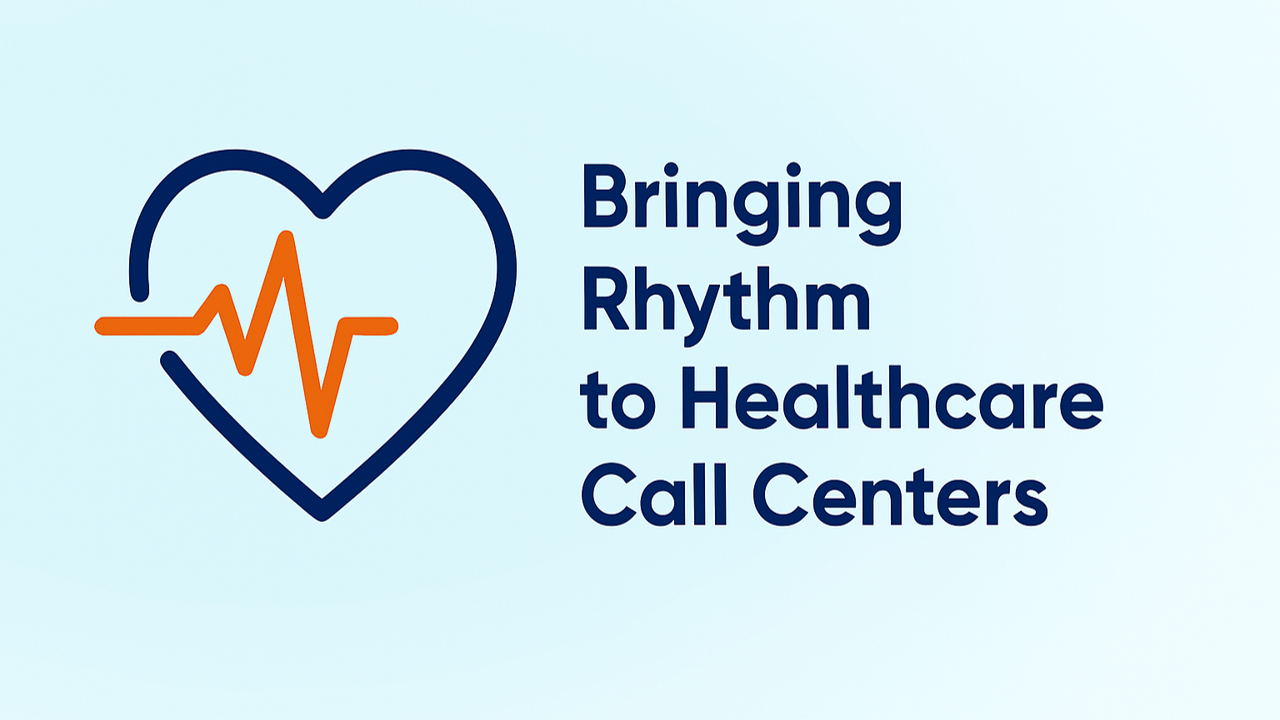
Imagine your call center as the heart of your healthcare system. Every patient flows through it. The call agent is often the first and last person a patient speaks with. And when that heart beats with irregular rhythms—inconsistent workflows, varied responses, fragmented processes—the entire body suffers.
Patients grow frustrated. Staff burn out. Costs rise. Quality falters.
Call centers are uniquely difficult to manage in healthcare. Why? Because they sit at the intersection of clinical urgency, operational complexity, and emotional distress. Agents navigate dozens of intricate workflows—insurance verification, appointment scheduling, nurse triage—often while callers are anxious, confused, or in pain.
Without consistent standards, this complexity doesn’t just add up—it compounds, creating a chaotic environment where even your best staff struggle to deliver consistent care.
And this isn’t just an operational issue. It’s a direct obstacle to achieving healthcare’s Quadruple Aim:
- Enhancing patient experience
- Improving population health
- Reducing costs
- Improving the work life of healthcare providers
The good news?
Just as a well-tuned heart pumps life and stability through the body, standardized call workflows create a rhythm that transforms your entire organization.
5 crucial steps to streamlined workflows
1. Identify All Call Types: Building Your Diagnostic Framework
Call types categorize patient interactions based on their purpose – whether it’s scheduling an appointment, checking insurance eligibility, requesting a prescription refill, or seeking clinical advice.
Think of this as your diagnostic lens: just as clinicians group symptoms to for a diagnosis, categorize patient interactions by their purpose to deliver excellent service:
|
CALL TYPES |
EXAMPLE |
QUADRUPLE AIM IMPACT |
|
Appointment Scheduling |
"I need to book an appointment." |
Improves patient access and staff efficiency |
|
Prescription Refills |
"I need a refill on my medication." |
Supports continuous care and reduces unnecessary visits |
|
Billing & Insurance |
"Do you take my insurance?" |
Reduces financial barriers to care |
|
Clinical Triage |
"I'm feeling sick, what should I do?" |
Directs patients to appropriate level of care |
|
Test Results |
"Are my lab results available?" |
Facilitates timely follow-up and reduces anxiety |
|
General Inquiries |
"Where is your office located?" |
Removes logistical barriers to care |
|
Other/Unknown |
"I need help but I'm not sure with what." |
Identifies emerging patient needs |
2. Map Each Call Flow: Creating Care Pathways for Communication
Think of call flows as care pathways for communication—structured steps that guide each interaction from first contact to resolution.
Like a clear treatment protocol, well-documented workflows ensure that nothing important is missed while eliminating unnecessary steps that waste time and resources.
3. Use A Standard Format: The Universal Protocol
Just as surgical teams follow universal protocols to ensure safety, your call center needs a consistent structure for every interaction:
- Greeting
- Identify caller
- Determine call type
- Assess urgency/acuity
- Handle the specific need
- Closing
- Documentation
When every call follows this structure, your team doesn’t waste energy remembering steps—they focus fully on helping patients.
4. Simplify Decision Points: Reducing Cognitive Load
Too many choices lead to decision fatigue—just like alarm fatigue in clinical settings. Simplify your workflows:
- Limit decision points to 2-5 options
- Prioritize by clinical urgency, not alphabetically
- Place common scenarios early in the sequence
Fewer decisions = better focus on complex, human moments.
5. Follow the Rule of ONE: Creating Your Central Command
Just as health systems benefit from unified electronic health records, your call center needs:
- ONE place to go
- For ALL flows
- Following ONE standard format
This central command approach eliminates the fragmentation that frustrates both staff and patients.
The Quadruple Aim Impact
When call center standardization becomes your rhythm, the transformation reaches far beyond your phone lines:
Better Patient Experience
Take Mrs. Garcia, who used to call three times to schedule her diabetes follow-up. Now she connects with the right person the first time.
Standardized workflows feel familiar and reassuring to patients—like walking into a room where someone already knows their name. Anxiety melts away, trust builds, and patients show up to appointments confident in their care.
Improved Health Outcomes
Trust leads to compliance. But every day, somewhere in America, a patient hesitates to call—fearing long holds, transfers, or inconsistent advice.
With standardized workflows, the worried mom with a feverish child doesn’t get three different answers. She gets clear, timely, and consistent guidance—building trust that leads to better care decisions.
Lower Costs
That extra minute your agents spend looking for the right screen? Multiply it by hundreds of calls a day and thousands a week.
One medium-sized health system found that simply standardizing appointment calls recaptured 42 hours a week—an entire FTE without hiring anyone.
Standardized workflows don’t just save time. They create capacity.
Enhanced Work Life
Picture Maria before and after standardization.
Before: her shoulders tense with each ring—Will I know how to help this person?
After: she answers with calm confidence, knowing exactly how to guide the call.
The change is emotional as much as operational. Your team didn’t enter healthcare to feel overwhelmed. They came to help.
Give them a system that lets them do just that.
Just as clinical teams' perfect treatment protocols to improve outcomes, perfecting your call center workflows lays the foundation for system-wide excellence.
Posted By

Stephen Dean is COO of Keona Health, where he’s spent 13 years building AI systems that transform patient access. Before “agentic AI” was a term, his team was deploying autonomous systems that now handle millions of patient conversations annually.
Related Post
November 19, 2024
heading into 2025, healthcare organizations face increasing pressure to digitize...

